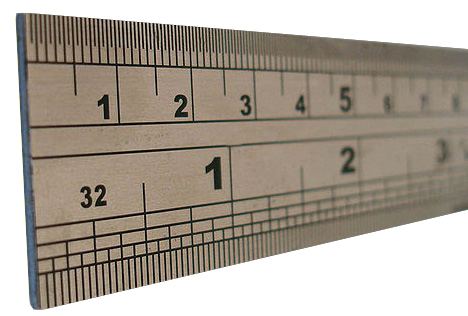 | ||
A Unit of length refers to any discrete, pre-established length or distance having a constant magnitude which is used as a reference or convention to express linear dimension. The most common units in modern use are U.S. customary units in the United States and metric units elsewhere. British Imperial units are still used for some purposes in the United Kingdom and some other countries. The metric system is sub-divided into SI and non-SI units.
Contents
SI
The base unit in the International System of Units (SI) is the metre, defined as "the length of the path travelled by light in vacuum during a time interval of 1/299,792,458 of a second." It is approximately equal to 1.0936 yards. Other units are derived from the metre by adding prefixes from the table below:
For example, a kilometre is 1000 metres.
Non-SI
In the Centimetre–gram–second system of units, the basic unit of length is the centimetre, or 1/100 of a metre. Other non-SI units are derived from decimal multiples of the metre.
Imperial/US
The basic unit of length in the Imperial and U.S. customary systems is the yard, defined as exactly 0.9144 m by international treaty in 1959.
Common Imperial units and U.S. customary units of length include:
Marine
In addition, the following are used by sailors:
Aviation
Aviators use feet for altitude worldwide (except in Russia and China) and nautical miles for distance.
Surveying
Surveyors in the United States continue to use:
Astronomy
Astronomical measure uses:
Physics
In atomic physics, sub-atomic physics, and cosmology, the preferred unit of length is often related to a chosen fundamental physical constant, or combination thereof. This is often a characteristic radius or wavelength of a particle. Some common natural units of length are included in this table:
Archaic
Archaic units of distance include:
Informal
In everyday conversation, and in informal literature, it is common to see lengths measured in units of objects of which everyone knows the approximate width. Common examples are:
Other
Horse racing and other equestrian activities keep alive:
